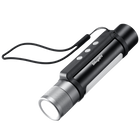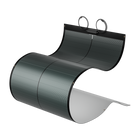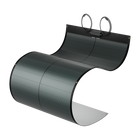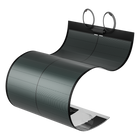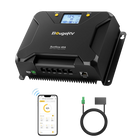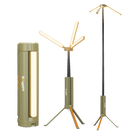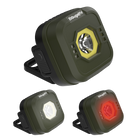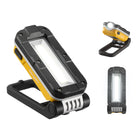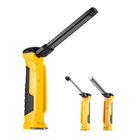What Size Inverter Do I Need for Camping? (Including Examples)

But here comes the million-dollar question: What size inverter do I need for camping? In this blog, we’ll break it down to make sure you get exactly what you need without overkill.
What Exactly Is an Inverter?
Before diving into sizes and specs, let's make sure we're all on the same page. An inverter converts Direct Current (DC) from your car battery or solar setup into Alternating Current (AC), which most household appliances use. Think of it as the bridge between your camping gear and the power source.
Why Do You Need an Inverter?
Camping is about getting away from it all, but that doesn’t mean you have to leave all comforts behind. Here are some reasons you might want an inverter:
- Charging Electronics: Phones, cameras, laptops, etc.
- Powering Small Appliances: Fans, small heaters, mini-fridges, coffee makers.
- Lighting: String lights, lanterns.
Determining Your Power Needs
First things first, let’s figure out what you’ll be using and how much power each item requires. Here's a quick rundown:
- Smartphone Charger: 10 watts
- Laptop Charger: 60-100 watts
- Mini-Fridge: 50-100 watts
- Portable Fan: 20-40 watts
- LED Lights: 5 watts per bulb
Add up the wattages of everything you plan to run simultaneously. Suppose you want to charge two phones (20 watts), run a laptop (100 watts), and power a fan (30 watts) at the same time. That's a total of 150 watts.
Then, Here's How to Calculate the Right Inverter Size
Inverters are typically rated by their continuous power output in watts. The rule of thumb is to choose an inverter with a capacity about 25-30% higher than your total wattage requirement. This extra capacity accounts for any initial surge power some devices might require when they start up.
If your total usage adds up to 150 watts, look for an inverter rated around 200-250 watts. Here’s a simple formula:
Minimum Inverter Size = Total Wattage × 1.25
So,
150 watts × 1.25 = 187.5 watts
Rounding up, a 200-watt inverter should cover your needs comfortably.
Types of Inverters
There are mainly two types of inverters: pure sine wave and modified sine wave.
Pure sine wave inverters provide power similar to what you'd get from a standard electrical outlet. They are perfect for sensitive electronics and devices such as laptops, digital cameras, portable fridges, and smartphone chargers. While pure sine wave inverters are generally more expensive than modified sine wave inverters, they’re recommended for devices that demand a higher quality power supply despite the higher cost.

Modified sine wave inverters are more affordable and are perfectly suitable for less sensitive equipment like lights and fans. However, they can cause problems or reduce efficiency for certain devices such as laptops, microwaves, and CPAP machines.
For camping, a modified sine wave inverter is usually good enough for most things you'll need. But if you're going to power sensitive electronics or medical devices like CPAP machines, it's worth getting a pure sine wave inverter.
Battery Considerations
Your inverter is only as good as its power source. Common options include car batteries, deep cycle batteries, and portable power stations.
- Car Batteries: Convenient but not ideal for long-term use since running your accessories could deplete the battery and leave you stranded.
- Deep Cycle Batteries: Designed to discharge and recharge multiple times, making them a better choice for camping.

Solar Panels: A Sustainable Option
Pairing your inverter with solar panels can keep your batteries topped off and extend your camping trip indefinitely. Just ensure your solar setup can generate enough wattage to meet your needs.

Practical Examples for Different Camping Setups
Let's walk through some practical examples to help you choose the right inverter for different camping scenarios.
Example 1: Solo Adventurer
- Devices: Smartphone (10 watts), LED Lantern (5 watts)
- Total Wattage: 15 watts
- Recommended Inverter: 50-watt inverter (enough headroom for additional small devices)
Example 2: Family Camping Trip
- Devices: Two smartphones (20 watts), Laptop (100 watts), Portable Fan (30 watts), Mini-fridge (60 watts)
- Total Wattage: 210 watts
- Recommended Inverter: 300-watt inverter
Example 3: Glamping Setup
- Devices: Four smartphones (40 watts), Two Laptops (200 watts), Coffee Maker (600 watts), Electric Grill (800 watts), Mini-fridge (60 watts)
- Total Wattage: 1700 watts
- Recommended Inverter: 2000-watt inverter (consider a pure sine wave inverter for sensitive electronics)
3 Useful Tips for Maximizing Efficiency
- Turn Off Unused Devices: Save battery life by turning off devices when not in use.
- Use Energy-Efficient Devices: LED lights and energy-efficient fans consume less power.
- Monitor Battery Levels: Regularly check battery levels to avoid getting caught without power.
Final Thoughts
And there you have it, folks! Choosing the right size inverter for camping doesn’t have to be rocket science. By adding up the wattage of your devices and factoring in a little extra for safety, you can easily determine what size inverter will meet your needs.
Remember, it’s always better to have a bit more capacity than you think you need, so don’t hesitate to go for a slightly larger model. And if you’re venturing off-grid, consider pairing your setup with solar panels to keep the juice flowing.
So, next time you find yourself under the starry sky, enjoying the crackling campfire, you’ll also have the peace of mind of knowing your trusty inverter has got you covered.
Happy camping!











